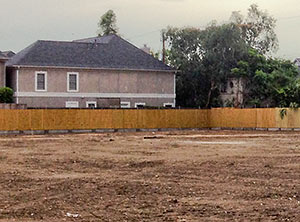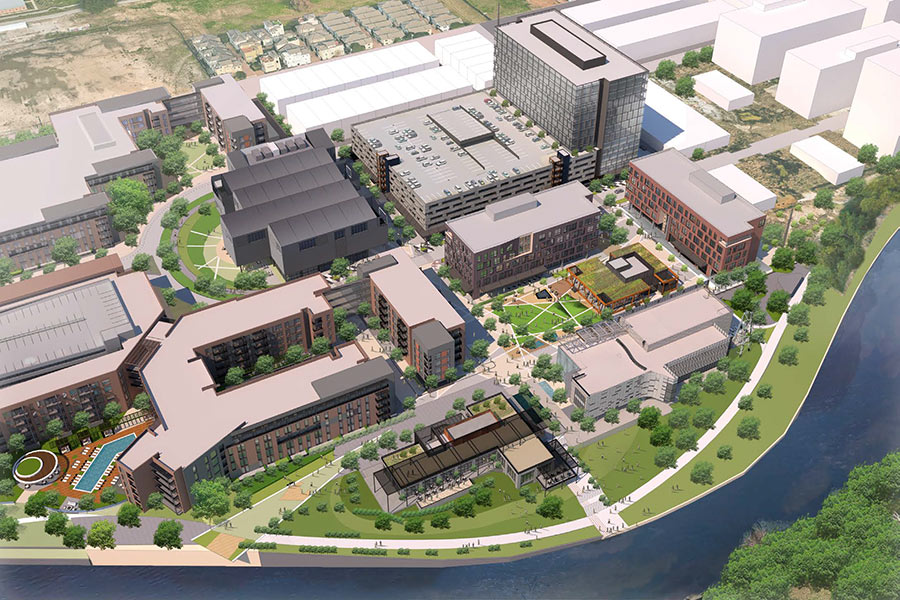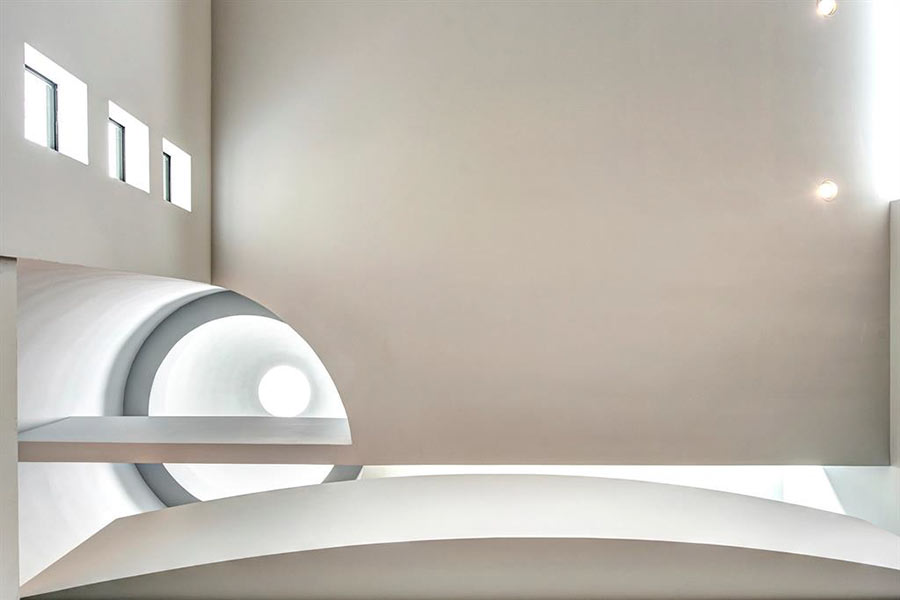IN ASHBY HIGHRISE TRIAL, ENGINEERS GET TESTY OVER SETTLEMENT  Engineers for both sides may be spending much of the coming weekend testing the Southampton soil surrounding the site of the Ashby Highrise. Erin Mulvaney reports that the judge in the civil trial has postponed additional testimony from Paradigm Consultants president Woody Vogt until next Monday, after the attorney for the group of neighbors suing Buckhead Investment Partners complained Vogt was attempting to present new evidence their own expert hadn’t had time to analyze and pick apart. Vogt, who was hired by the defendants, told the jury last week that construction of the proposed 21-story highrise tower at 1717 Bissonnet St. would have no adverse affects on the foundations of nearby homes, and produce only one inch of settlement in the soil. But he also admitted he had used separate sets of calculations for each of those 2 predictions, and that the expert witness for the group of neighbors suing the developers had performed a more thorough analysis of the construction’s potential effects. Writes Mulvaney: “Rick Ellman of New York-based Muesler Rutledge Consulting Engineers testified earlier for the resident group that 10 existing homes near the site could suffer moderate to severe damage, including cracked foundations, buckled walls and busted water pipes. Ellman predicted the ground would ‘settle’ four inches.” [Houston Chronicle ($); previously on Swamplot] Photo of site: Swamplot inbox
Engineers for both sides may be spending much of the coming weekend testing the Southampton soil surrounding the site of the Ashby Highrise. Erin Mulvaney reports that the judge in the civil trial has postponed additional testimony from Paradigm Consultants president Woody Vogt until next Monday, after the attorney for the group of neighbors suing Buckhead Investment Partners complained Vogt was attempting to present new evidence their own expert hadn’t had time to analyze and pick apart. Vogt, who was hired by the defendants, told the jury last week that construction of the proposed 21-story highrise tower at 1717 Bissonnet St. would have no adverse affects on the foundations of nearby homes, and produce only one inch of settlement in the soil. But he also admitted he had used separate sets of calculations for each of those 2 predictions, and that the expert witness for the group of neighbors suing the developers had performed a more thorough analysis of the construction’s potential effects. Writes Mulvaney: “Rick Ellman of New York-based Muesler Rutledge Consulting Engineers testified earlier for the resident group that 10 existing homes near the site could suffer moderate to severe damage, including cracked foundations, buckled walls and busted water pipes. Ellman predicted the ground would ‘settle’ four inches.” [Houston Chronicle ($); previously on Swamplot] Photo of site: Swamplot inbox





The story that will never end. This is litigious beyond belief. I no longer side with the neighbors on this issue. This has become completely ridiculous. I hope when this is over the developer sues the homeowners to recoup legal fees then adds 40 stories to building. I live in this neighborhood and even I am appalled at the lengths the neighbors are going to to sabotage this project.
Actually, of all the issues in the Ashby fight, this is the one issue that is not subjective NIMBY complaints about traffic and character of the neighborhood, etc. If the construction of a high rise causes four inches of settling, the row of houses right behind the building are going to see very significant damage. This is fair game for litigation. Anyone who says that they would not sue if a neighboring development was going to cause 4 inches of settling on their property is just lying.
I can find experts to dispute the expert that disputed the other expert while disputing a charge on their phone bill. The settlement cannot be calculated 100% ahead of time, it’s range of numbers with various likelihoods of occurence, but even then that does not guarantee any sort of damage to adjacent properties.
I am totally on the side of the homeowners. With the city’s lack of zoning, homeowners have no choice except to litigate in order to protect themselves against over development. Traffic, parking (these kind of developments tend to dump a lot of cars into surrounding areas), the tower’s shade wall impact on gardens, the settlment of soil, noise and light pollution, are all valid concerns. Fight on!
Buckheadstrong should just fold their multi-story tent.
This and the updated traffic study presenting an up to five minute wait to make a left off Dunlavy is all stuff the city should be testing more diligently in the first place.
The left off of Ashby can already be a 1-2 minute wait without the highrise, it will get worse. Anyone who says they wouldn’t complain about sitting at a stop sign for 1-2 minutes is full of …..
Regardless of the number of inches of settling, the figure that is most relevant is the radius and slope of the affected land. But my impression from browsing an engineering textbook regarding the settlement of highrise foundations (yes, precisely that subject) is that all perceptible settling of this nature should occur directly underneath the load of the building. The pressures can manifest in different shapes, but they all taper with depth rather than flare out. …which makes sense.
@ MRH005: I don’t live in that area anymore, but I used to. Yeah, taking left-hand turns onto Bissonnet during rush hour was always a pain. It was often better off (and more scenic) to cut through the neighborhood to something “not Bissonnet”. But hey, what do you expect? It’s a big city, not The frickin’ Woodlands. That’s what you do.
@Niche – speaking of surface street traffic, have you tried the Whitelands lately? Criminy it can get silly congested – I suppose because they don’t really have much of a grid, just a smattering of artistically curving four lane boulevards.
In ‘Why Buildings Fall Down’, Levy and Salvadori describe the Palace of Fine Arts (Mexico City) subsiding 2 meters after being built 1900-1930, then rising 4 meters during the subsequent 40 years. The cause of the elevation was evidently the erection of numerous high-rises in the vicinity. There are unusual soil conditions, since parts of MC are built on a filled-in lake; also the Palace is massively overbuilt and suffered no damage from its see-saw experience. An extreme example, but it does happen. From my BOOKSHELF.
@Niche: There is no one size fits all rule of surface settlement for high rises. There are numerous factors to be considered (type of foundation, subsurface soils, water table, etc.). The issue is actually area of ongoing study in the engineering world. And as shown in the picture above, the houses affected are literally on the fence line of where the foundation for the high rise is going to be.
Your pic is dated – the fence is now white after painting over the weird graffiti.
Expert witnesses are paid to say what their clients want them to say.
@ Gisgo: That might make sense in a place with unique geology, like Mexico City, or where there has been a cluster of highrises. The site in question has neither of those factors in play.
Can anybody remember this being a problem anywhere in Houston? Give me a reasonable example.
I didn’t think you could sue in this country for damages that are only hypothetical. No actual damages have occurred. Period. Could have sworn a real loss had to exist. Hmmm. Perhaps the homeowners could sue after the building is built if at that time they have suffered damages–but what right have they to sue for losses not incurred–only losses that may or may not occur some day in the future. This lawsuit is setting very bad precedent if allowed to proceed.
Montrose and much of the inner loop has been raped by the Mayor Porker and the developers, why should this area be any different?
Rise High Ashby!
@Thomas – One may recover future damages, the difficulty lies in putting a reasonably certain number on them. Taken a step further, one of the elements of getting an injunction against something is if it is allowed to occur, money damages alone would not be sufficient to compensate – a good example is the argument that routinely occurs in other threads about the value to place on cutting down mature trees.
This may be the next stop for the Ashby Developers, actually getting Federal subsidies to assist in development. These lucrative Section 8 subsidies could also assist the community in complying with diversification mandates.
“The 1968 Fair Housing Act prohibits racial bias in the sale, rental and financing of housing. HUD, the Department of Housing and Urban Development, which enforces the civil rights law, appears to be expanding it to include policing neighborhoods for racial diversity.
The agency has proposed to add a 33-page rule titled “Affirmatively Furthering Fair Housing,” which would give it a blunt instrument for social change in cities it identifies as “segregated.” Metropolitan areas that show the worst segregation – such as Dallas; Los Angeles; Chi¬cago; Cleveland; Houston; Atlanta; Memphis; Charlotte and Raleigh, N.C.; Indianapolis; and Cincinnati and Columbus, Ohio will be aggressively “targeted” for enforcement action.”
IBD 12/31/2013